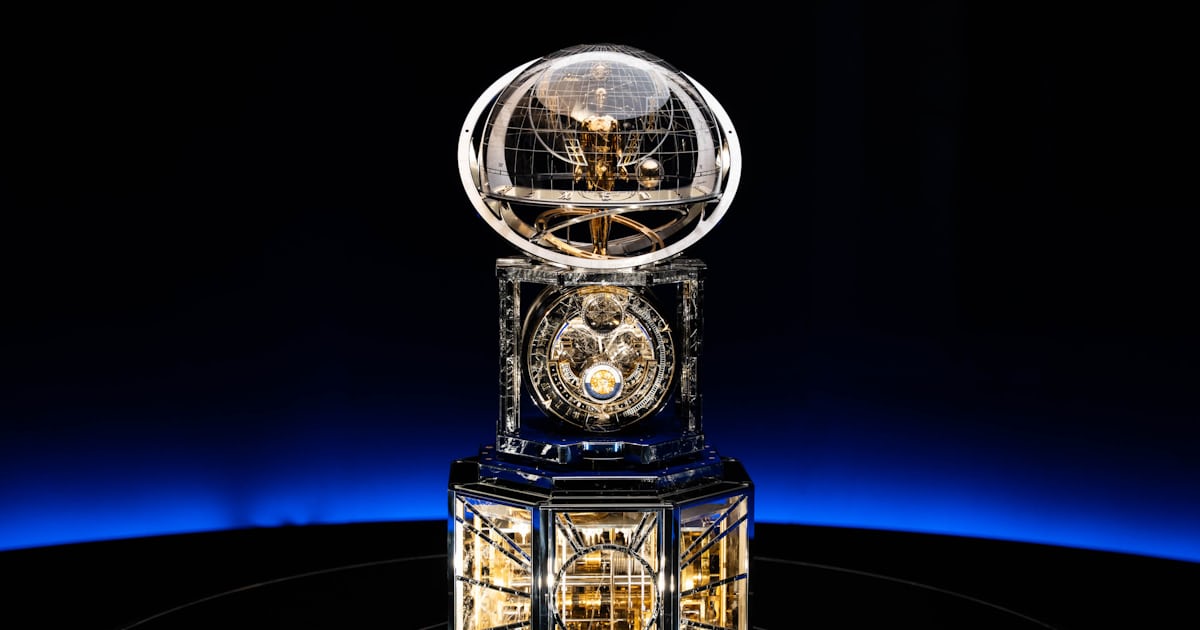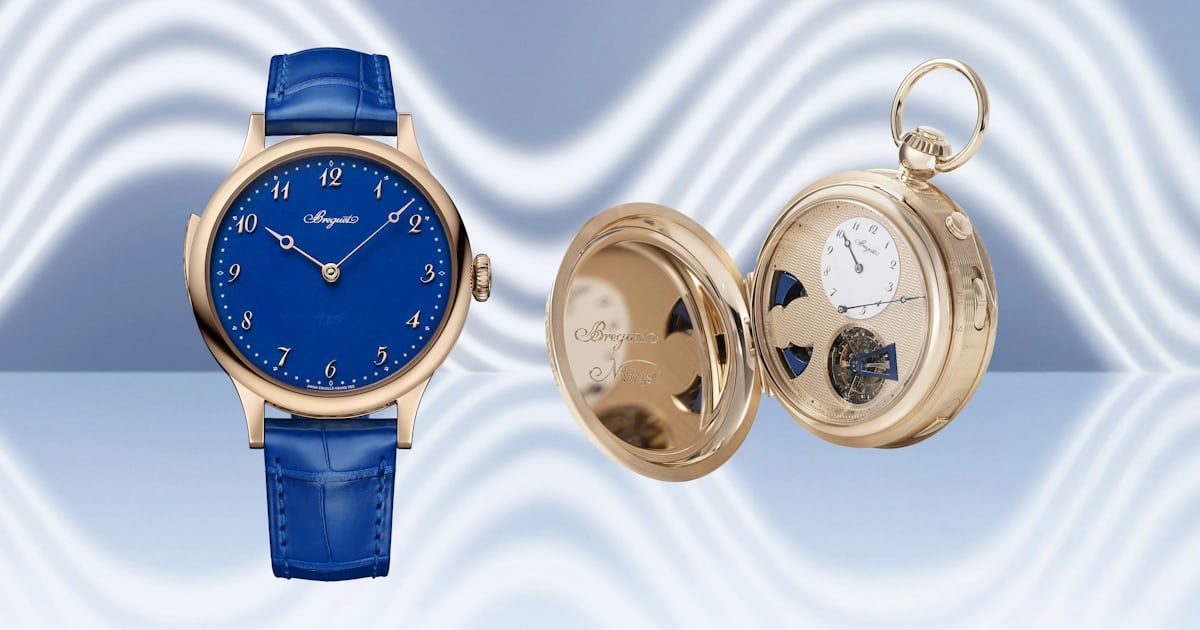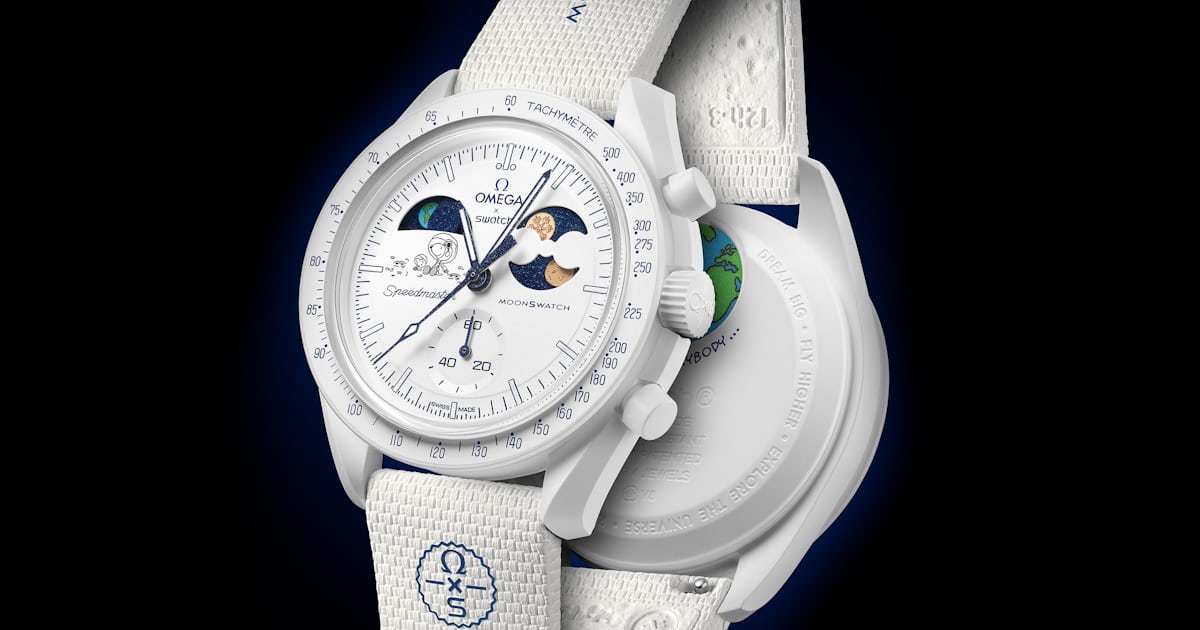Editor’s pick — Accessory quick take: key highlight (movement/specs for watches, materials/finish, limited run, pricing tier) in 1–2 lines.

This past June, I flew to Geneva for my first visit to Vacheron Constantin. I’ve been on plenty of such press engagements before, but this one felt different — I had no idea what to expect. Usually, a manufacturer visit falls into one of two types: either you tour the workshops to see watchmaking in action, or you preview a new release with plenty of advance material. But this time, even Vacheron’s New York team, who helped organize the trip, didn’t know what awaited me. That’s when I knew something unusual was happening. The brand had already unveiled the world’s most complicated wristwatch — the Les Cabinotiers Solaria Ultra Grand Complication — earlier this year at Watches & Wonders. So what else could require this level of secrecy? Clearly, Vacheron was preparing to show us something that went well beyond business as usual.

A view from Vacheron’s headquarters, but not where the project would be.
As it turned out, the project was so secret that it was kept off-site, a few minutes away from Vacheron’s Plan-les-Ouates headquarters, at a facility belonging to Richemont’s sister brand, Piaget. When we arrived, the building’s blinds were completely drawn. Inside, the room was nearly pitch-black, with a few familiar industry faces waiting. Vacheron’s Christian Selmoni was an expected presence, but I was surprised to see François Junod, Switzerland’s master of automatons, joined by Sandrine Donguy, Vacheron’s Product and Innovation Director, and Arnaud Nicolas, CEO of clockmaker L’Epée 1839.
Then it dawned on me: whatever we were about to see, it wasn’t going to be a watch. After a few words from the team, the doors opened, and like the glowing briefcase in Pulp Fiction, a burst of light flooded the room — and my jaw dropped.

Arnaud Nicolas, Sandrine Donguy, Christian Selmoni, and François Junod awaited us (left to right).
By now, we’ve seen what this all turned out to be — last month’s official launch of Vacheron Constantin’s La Quête du Temps clock was in Paris, as the clock made its debut on display at the Louvre. But months ago, hidden away in a dark room on the outskirts of Geneva, La Quête du Temps felt far more imposing than its three-foot stature, surrounded by nothing but black walls.
La Quête du Temps is technically a clock with an automaton, but not an automaton clock. In this case, the clock serves as the primary mechanism, with the automaton linked to the clock as a secondary function. Semantics aside, La Quête du Temps “Mécanique d’Art” took seven years to develop and comprises 6,293 mechanical components, 2,370 of which belong to the clock itself. On the exterior, over a thousand parts go into the decoration and construction of it all, with the design and conception led by Alexia Steunou. And of course, what would such a machine be without patents that justify its conception? Here, we have seven for the watchmaking and eight for the automaton.
The Astronomical Clock

Before we get to the imposing figure sitting at the top of La Quête du Temps, we have to talk about the astronomical clock, with the foundational contribution from collaborator L’Epee in its mechanism and casing. It is, as images and videos may convey, an absolutely overwhelming creation to properly digest, regardless of whether you’re seeing it online or in person. And part of that’s physical, due to the sheer amount of stone setting and mirrored rock crystal used. Legibility, as it seems, is not the priority here in its design.
The best place to begin with La Quête du Temps is at its most fundamental element — the way it expresses time. One common motif connecting Vacheron’s watchmaking to this monumental clock is the generous use of retrograde mechanisms: the time scale is divided into two halves spanning the circumference of the dial, with Roman numerals marking the hours on the left and Arabic numerals for the minutes on the right. Floating gold arrow pointers progressively move upwards until the end of each scale, when the pointer then immediately drops back down to the beginning

The retrograde hand for the current time, on the minutes side.

Split power reserves.


Continuing with the retrograde mechanisms is the fascinating split power reserve, set in segments of lapis lazuli and moonstones. The left scale starts at empty, with the floating pointer traveling up the scale until it gets to 7 ½ days. Then, the right pointer starts moving up the right scale as the power reserve goes all the way up to 15 days, and the sequence is reversed as the power reserve depletes. Below the power reserves, two smaller curved tracks in beveled rock crystal are tied to heat-blued retrograde hands, with the left indicating the time of sunrise (from 4:00 to 9:00), while the right indicates the time of sunset (from 16:00 to 21:00).
Retrograde aside, there is still so much on the front of the clock. It’s impossible to miss the massive cyclops-style magnifier perched at the top — a literal lens into Vacheron’s mechanical bravado. Beneath it sits an oversized tourbillon, its 18.8mm balance wheel housed within a Maltese cross-shaped cage measuring 28mm. Look closer, and amid the visual density of the piece, you soon realize that the frame of the cyclops is engraved with Vacheron’s Maltese cross motif, while the front is surrounded by a ring of baguette-cut diamonds.

The giant oversized tourbillon looms over the perpetual calendar below.



A second ring of baguette diamonds, upping the total on the clock to a hundred, surrounds a 24-hour scale with a pointer ring on the lower half of the face. In the center, a stunningly hand-engraved applique of a sun and moon is set on top of a hand-turned guilloché disc of sunrays, in different straitions and curves that make the artwork come alive. This sun applique, not unlike the hubcap of a Rolls-Royce, is set in the 24-hour disc with ball bearings and weighted towards the bottom, so that it will stay perfectly oriented. That is because the ring pointer is physically connected to the sunray-guilloché disc, which then rotates throughout the day. So, even as the pointer and the attached disc rotate, the face of the sun and moon stay perfectly still.

The majority of the front is taken up by the perpetual calendar, with the month, day of week, and leap year discs made once again out of rock crystal with the apertures framed in gold. The current date is framed by a hand-engraved gold sun, traveling through a lower track and resetting once again in a retrograde flyback at the start of each month. No, it’s not very legible, and yes, in a clock like this, a freaking perpetual calendar might feel like the most pedestrian thing about it.
On the reverse, the astronomical portion of the astronomical clock comes into play, with the dial revealing a celestial vault of the Northern Hemisphere that tracks the constellations and their locations in real time. This also tracks the sidereal day, which has a length of 23 hours, 56 minutes, and 4 seconds. It’s about four minutes shorter than the typical 24-hour day, as it references the amount of time it takes for Earth to make one full rotation relative to the stars rather than the sun. Surrounding this dial is a series of concentric rings, with tracks for the months and seasons in white grand feu enamel, as well as hand-engraved gold zodiac signs. In case you were too lazy to go back to the front of the clock to check on the split power reserve, a singular retrograde power reserve display, indicated by a blue hand, is set in the upper part of the dial to complement the large swath of blue for the celestial vault.

The back dial is framed by baguette-cut moonstones.


At the very bottom of the clock, separating it from the base, is a two-level plinth of lapis lazuli, depicting the solar system through planets of different stone cabochons as well as their names in English, inlaid with mother-of-pearl. It is a piece of art in and of itself — scroll through the gallery below to see all the details on these surfaces.

Scroll through the gallery for more.




Jupiter is set with crazy lace agate.

Bi-colored mother-of-pearl make for the stars.



With over two thousand components in total for Calibre 9270, plentiful large-scale hand-finishing, as well as 23 horological complications, Vacheron and L’Epee are absolutely flexing their mechanical prowess here. Though much of what makes this clock insane is the clever execution of familiar horological elements, patents usually give us a good look into the hidden things that also take just as much, if not more, research and development into the concept. Here, much of that hidden innovation goes towards the user experience, with two of the patents covering security devices for time setting as well as the correction of the complications. The impressive split power reserve has been granted two patents — one for the split mechanism itself, and another for the coaxial drive system that links this mechanism to the single unified power reserve on the reverse celestial side.

Calibre 9270, as seen from the side of La Quête du Temps
The Automaton

François Junod is a mechanical wunderkind. A Swiss automaton maker based in Sainte-Croix, just a quick helicopter ride from Geneva, Junod has spent his entire adult life crafting mechanical figures and sculptures. He is fully invested in what he admits as a dying art, one that has been heavily rooted in tradition, yet very few people exist today to carry out this incredibly niche form of art. His relationship with Vacheron goes back twenty years, with the co-creation of the L’Espirit des Cabinotiers clock for the manufacture’s 250th anniversary, as well as the Arca clocks in 2015 and the Metiers d’Art Copernicus Celestial Spheres watches two years later.
Throughout this time, Junod has never been shy to rely on modern technology for his craft, with many of the innovations made for many of the brands he’s worked with thanks to modern materials and manufacturing techniques. With his work on La Quête du Temps, the idea of modern automata couldn’t be stronger. In my conversations with Junod, he acknowledges that such a clock could not have been possible to make even twenty years ago. It’s the combination of traditional techniques along with contemporary tools like computer-aided design and metal 3D printing that makes it all happen.
Eight patents demonstrate Junod’s boundless creativity in automata design for La Quête du Temps, encompassing the mechanical time memory that links the automaton to the clock, the flow of movements on the human figure, and the ability to gesture in multiple planes and directions.



The automaton on La Quête du Temps takes the form of a figure named the Astronomer, sculpted by Junod and then cast in bronze, standing at the top of the clock. Its body is hand-engraved, then acid-etched to emphasize the graphic depiction of the constellations. Finally, 132 brilliant-cut diamonds are grain-set onto the body of the figure to represent the principal stars of the sky.
The Astronomer is set within a massive glass dome, 40 cm in diameter. Once again, a depiction of the celestial vault in the northern Hemisphere comes into play, but on the dome, the constellations are positioned according to how they would have been on Vacheron’s day of founding, on September 17th, 1755. Determined in collaboration with (actual) astronomers from the Geneva Observatory, the celestial vault is entirely painted freehand, with Vacheron proudly emphasizing the lack of machining or even a pre-traced design. Sound complex enough? Well, how about the fact that the entire thing is painted on the inside of the dome? Yes, that means the artist painted every single constellation in reverse and upside-down. Three weeks of painting sounds downright expedient given the context.

Scroll through the gallery for more.






When the mechanism is activated manually or programmed up to 24 hours ahead of time, a series of chimes emits from the base, produced via a metallophone and Wah-Wah tubes. Then, the Astronomer at the top of the clock comes to life, looking down and around at its surroundings as if it had just woken up from a long slumber. But then, it starts to acknowledge the piece from which it is destined to be forever attached. First, it points towards the moon and its track, beckoning to view this even smaller automaton as it makes its way across the front arc every 29.5 days (more on this in a bit).
Immediately following the first sequence, a new melody plays, while the Astronomer points up at the giant sapphire globe and its celestial map, right arm first, then the left arm, with the head and body moving along with these gestures. Once the sequence finishes, the Astronomer returns to its neutral standing position, ready for the third and most complex of sequences.

Pointing at the time.
The final sequence is truly the showstopper. Accompanied by music, the Astronomer wakes up one final time, moves around, and then finally its arms rise and pivot towards the two opposing time tracks next to the figure — one for hours and one for the minutes, for the current time. These tracks are made out of sintered titanium powder (which is a fancy way of saying that these tracks are 3D printed titanium), with the numerals gilded in gold leaf.
While that’s already impressive enough, a close look at the time tracks reveals that the minutes and hours are actually set in a completely random order. Though this might seem like a creative decision to purely flex on the automaton’s abilities while making Junod’s life so much more difficult, it is actually surprisingly an important one, ensuring that even if the clock is played back multiple times within the span of an hour, the final gestures of the automaton would be quite different. It’s this “at any cost and any effort” mentality that makes La Quête du Temps truly shine.



A peek into the base, where the automaton system is.
When you see La Quête du Temps in person, not only is it just immediately impressive that the complexity of parts required for such a lengthy sequence all fit within the rest of the clock, but the figure itself is so far separated from its mechanics. To translate those movements so far up, Junod figured out to use tungsten cables for the mechanism itself. It’s this completely modern invention within an old art form that feels like the best of the maker.
Being able to fit a sequence so long within a (relatively) compact space is completely atypical in most automata. With this creation, Junod devised a new brilliant system for the three combined sequences and all 158 cams, inspired by the barrel of a revolver. Seen through the crystal panels of the base, the revolver fits three separate programs of movement within one compact mechanism, essentially three cylinders linked in a planetary gear system — each of these cylinders is its own rotating row of cams, making contact with the mechanical followers that convert the cams’ rotations into linear movement. Once that sequence is over, the planetary system rotates out the finished cylinder, while bringing the next one into contact with the followers. Despite being hidden away during normal operation, the entire revolver system feels like a show in and of itself. I could watch that mechanism alone for hours.




The planetary gearing responsible for the revolver system, switching out the three sequences of cams.
The grandest expression of retrograde in La Quête du Temps lies in the three-dimensional retrograde moonphase placed on a semi-circular track following the curve at the bottom of the glass dome. Applied gold numerals mark the 29 ½ day cycle for the moonphase to run its course. The moon, encased in glass, depicts the phase of the moon by splitting into a light golden half and a dark blue half, rotating inside its transparent shell as the phase of the moon changes through the month. Not only is it mechanically linked to the Astronomer automaton as well as the astronomical clock, with no need to set it separately, but inside the hollow moon is actually its own barrel and spring, which winds up as the moon makes its way across the curved track every 29 ½ days. Then, when it reaches the end, the spring releases its energy and sends the moon flying back to the very beginning again. And yes, this is very much patented.



270 Years Of Mechanical Creativity
Vacheron Constantin has really gone all out for its 270th anniversary, and La Quête du Temps feels like the perfect culmination of that celebration. What’s even more remarkable is that the clock isn’t the brand’s only showstopper this year — the Solaria alone would have been more than enough to mark such a milestone.

For me, the most exciting aspect of all this is Vacheron’s enduring partnership with François Junod. Collaborations like these not only spotlight Junod’s extraordinary craft but also help preserve it for future generations. In my conversations with Junod and Selmoni in Geneva, I learned that projects like this are inspiring younger watchmakers to explore the art form — some even finding their way to Junod’s own atelier. The idea of “modern automata” might sound paradoxical, but this project proves there’s still so much to be discovered.
In this fever dream of maximalist mechanical artistry that is La Quête du Temps, Vacheron has managed not only to honor its past but, together with its collaborators, to chart a course for the future of horology. Well done.
Source: www.hodinkee.com — original article published 2025-10-14 19:00:00.
Read the full story on www.hodinkee.com → [source_url]



